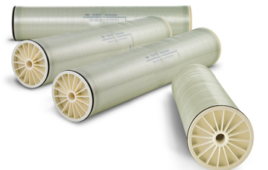 Farmers interested in bioenergy crops now have a resource to help them determine which kind of bioenergy crop would grow best in their regions and what kind of harvest to expect.
Farmers interested in bioenergy crops now have a resource to help them determine which kind of bioenergy crop would grow best in their regions and what kind of harvest to expect.
Researchers at the Univ. of Illinois have published a study identifying yield zones for three major bioenergy crops.
“The unique aspect of our study is that it provides detailed information about where these crops can grow, in terms of their location and stability over time, which has not been done in the past,” said U. of I. atmospheric sciences professor Atul Jain, who led the study with agriculture and consumer economics professor Madhu Khanna.
Although corn has been the main feedstock used for ethanol production, relying solely on corn is not sustainable because of its impacts on the environment and food prices.
Other crops show greater potential for ethanol production, particularly large perennial grasses such as Miscanthus and switchgrass. These grasses yield more ethanol per hectare in the U.S., while needing fewer resources than corn.
“With growing interest in bioenergy crops as a potentially important source of energy, it is crucial to explore high-yielding feedstock sources that could provide abundant biomass for large-scale biofuel production and minimize the amount of land diverted from food to fuel production,” Jain said. “The extent to which this goal can be achieved will depend on the biophysical potential of producing bioenergy crops on the available land.”
The Illinois researchers studied three biofuel crops to determine where they would grow best in the U.S.: Miscanthus and two types of switchgrass, Cave-in-Rock and Alamo. They used a land-surface model called Integrated Science Assessment Model (ISAM), developed in Jain’s laboratory, which takes into account environmental attributes such as water and temperature, biological properties such as nutrient availability, and the dynamic response of the crops to changes in environmental conditions.
The researchers calibrated and validated the model using experimental data collected at more than 75 sites across the U.S., using the model to determine yields over 10 years. They identified regions likely to continuously produce higher or lower yields for each crop, based on favorable or unfavorable conditions.
For example, Alamo switchgrass has a high, stable yield in the southeastern states, while Miscanthus and Cave-in-Rock switchgrass grow best across the Midwest. Across Indiana, Ohio and Kentucky, Miscanthus has about twice the yield of switchgrass, but the yield is unstable, so farmers may have to modify production practices and apply additional resources annually to reduce variability in Miscanthus yields.
The researchers expect that the results of their study, published in the journal BioEnergy Research, will enable farmers to make better decisions about which bioenergy crop to grow. A farmer in the south can look at the maps and see that his area is in the low-yield, unstable zone for Miscanthus, but the high-yield, stable zone for Alamo switchgrass.
Jain said there are many other factors to consider, and the team is working to expand its model to give farmers a more complete picture of the risks and rewards of producing bioenergy crops.
“We want to develop an integrated system that can determine not only the potential yield of these crops, but also the economic cost and variability in returns from their production,” Khanna said. “In some places, farmers may have to invest more to plant these crops. We would like to examine how returns and risks from producing these crops differ across regions.”




